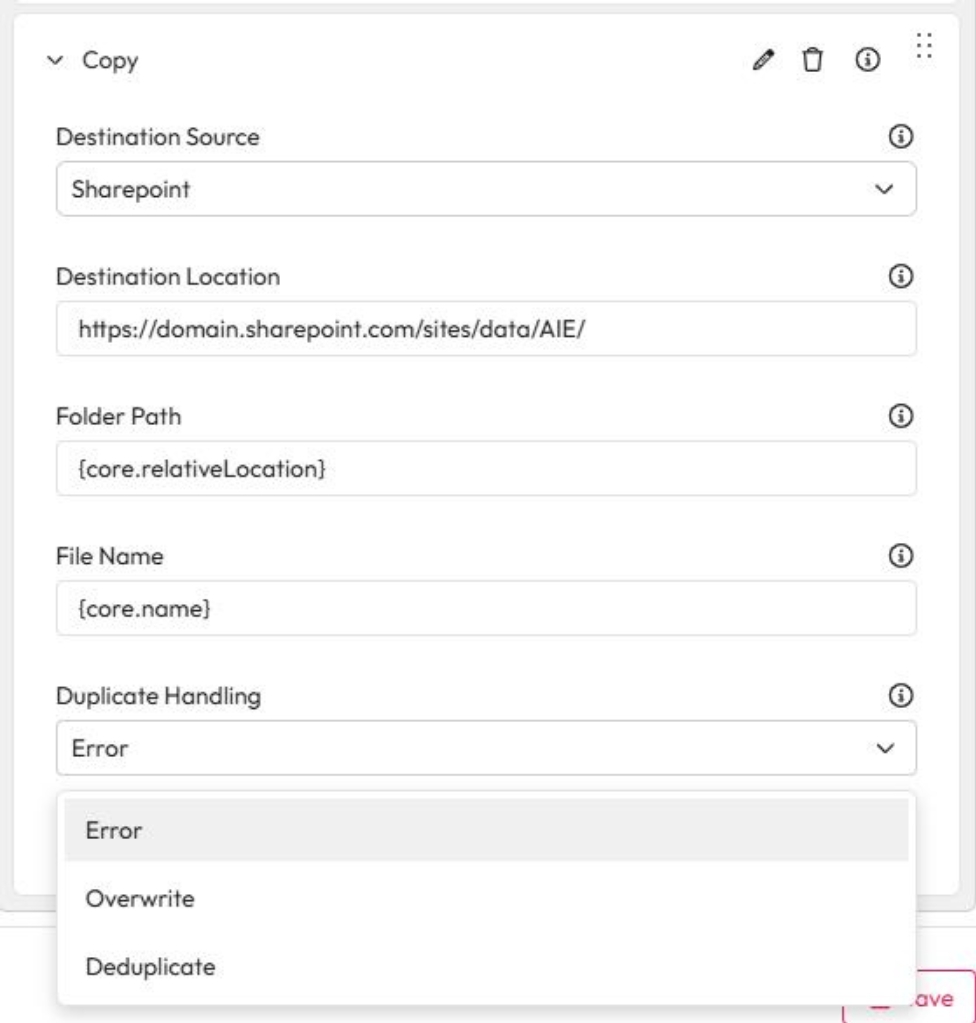Copy
This copies items from one source to another. Copy needs to be enabled on the source within Workplace AI and the underlying credentials used to access the source need write permissions.
Destination Source - Select source to copy the item to.
Destination Location - Enter the location within the source where the item will be copied to.
This will be source type specific.
This can be constructed with hardcoded strings or using placeholders that are replaced at runtime or a combination.
Folder Path - Enter a custom folder path to determine the folder structure for the items in the source location.
{core.relativeLocation} will recreate the folder structure from the original source in the destination location. Alternatively you can set a static name to create one folder for everything to live in.
This can be constructed with hardcoded strings or using placeholders that are replaced at runtime or a combination.
File Name - Enter a custom naming convention for the copied items.
{core.name} will maintain the files name.
This can be constructed with hardcoded strings or using placeholders that are replaced at runtime or a combination.
Duplicate Handling - Select how duplicates are processed in the destination system from the dropdown.
Error - This fails the file, marks it in an Error state and continues processing.
Overwrite - This overwrites the existing file in the destination location.
Deduplicate - This creates files with an incrementing number in the name for uniqueness.
For example if MyFile.pdf exists, the new copied file will be named MyFile(2).pdf, then MyFile(3).pdf and so on.

Advanced Options
Select Show Advanced Options
Define the maximum number of items to process concurrently in Bounded Capacity.
Define the maximum number of items that can be queued.
Last updated